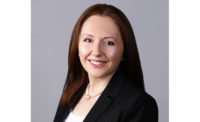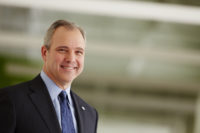Every successful project starts with a framework. A vision statement. A blueprint. The editors of Engineered Systems are proud to present The Blueprint — a monthly Q&A interview with HVACR engineering’s leading voices. These one-on-one discussions will examine the trade’s history, current industry trends, the factors shaping the sector’s future, and more.
The Energy Management Association (EMA) is dedicated to advancing the quality of energy management products and services for the benefit of the building owner.
The core component of EMA’s programming is the Energy Management Professional (EMP) certification. In less than four years, it achieved accreditation by ANSI and became recognized by the Department of Energy’s Better Buildings® Workforce Guidelines program. Apart from the distinction associated with these designations, it ensures that the EMP is identified as a “Qualified Energy Auditor” by the definition established in the ASHRAE 211 Standard for Commercial Building Energy Audits.
Recently, Bob Knoedler, president, EMA, sat down with Herb Woerpel, editor-in-chief of Engineered Systems, to discuss how the shift to virtual meetings has positively impacted the organization, the importance of energy efficiency, and more.
To see all of Engineered Systems' Blueprint Q&A interviews, click here.
Engineered Systems: Bob, welcome to the broadcast. Please take a moment to introduce yourself.
Bob Knoedler: I’m a vice president with Hanson Professional Services and the firm’s chief commissioning engineer. My background is in consulting engineering, dealing with the analysis, design, and commissioning of mechanical and electrical building systems.
I have also been actively engaged in professional organizations, including the Energy Management Association (EMA), the AABC Commissioning Group (ACG) and the Building Commissioning Association. I have spoken, written, and taught extensively about various engineering topics, including commissioning and energy management.
Engineered Systems: Share a little bit more about Hanson Professional Services.
Knoedler: Hanson’s is a national, employee-owned consulting firm with 30 offices across the United States. We specialize in engineering, planning, and a range of allied services, including commissioning and energy-related services. Formed in 1954, we offer a variety of professional services to public and private clients in a number of different of markets.
Engineered Systems: You’re currently serving as the president of the Energy Management Association. What exactly is the EMA, and what influence does it have on the engineering industry?
Knoedler: EMA is dedicated to providing education, training, and certification to energy management professionals on behalf of building owners. The organization was created in response to industry trends and the need for a new type of organization with recognized credentials to support its members.
Our reach and influence have expanded to include a wide array of building engineers, contractors, building owners, facility managers, manufacturers, utilities, commissioning providers, and others with an interest in advancing the quality of energy management services.
EMA’s Energy Management Professional (EMP) certification program is truly unique within the industry, because it combines energy management skills and knowledge with systems’ commissioning methodology. The training we provide in the EMP program fully integrates these commissioning principles, in fact, all of our EMP seminar trainers are also ACG certified Commissioning Authorities (CxAs) — including myself!
Part of the reason for this approach, beyond the obvious synergy, is that EMA is a subsidiary of the ACG. I actually sit on a committee that is working on the next update to their Commissioning Guideline, specifically because energy management and existing building commissioning (EBCx) are so closely related.
Engineered Systems: Bob, we hear a lot about energy today. How and why should we quantify its importance?
Knoelder: Energy is recognized as the most critical infrastructure by the government; the one on which all other infrastructures depend. The world’s demand for energy continues to grow, driven by a number of factors, including the increase in digitization and communication (look at the rapid growth in e-commerce, teleconferencing, and social media) and the increased demand for cooling and heating in growing economies.
Currently, the greatest increase in energy demand is in electricity. Global electricity consumption is expected to increase by nearly 50% by 2050. While industry and building systems currently account for over 90% of global electricity demand today, transportation (related to the growth of electric vehicles) is expected to help fuel growth over the next decade.
While renewable sources are poised to accommodate an increasing percentage of this growth, the energy industry faces a number of challenges, including resiliency, reliable distribution, affordability, and various environmental and sustainability issues.
Engineered Systems: I understand your organization cosponsors CxEnergy, a major conference and exposition, annually. Can you share a little bit more about CxEnergy?
Knoedler: Yes, the CxEnergy Conference & Expo is the premier annual event in building commissioning, energy management, and building diagnostics. The event draws hundreds of the nation’s leading commissioning experts, energy management professionals, MEP engineers, HVAC testing professionals, facility managers, and building owners.
Both last year and this year, we have moved to a virtual conference due to COVID but have still offered a number of interesting presentations covering a wide range of topics in energy management and commissioning. For example, I am pre-recording a technical presentation with Jim Magee, CxA, EMP, Facility Commissioning Group, titled, “Codes, Standards, Ordinances and Guidelines – Which Rule?” We will review some of the differing commissioning requirements currently incorporated (or adopted by reference) within current codes and standards and some of the efforts by Cx organizations toward reconciling/standardizing these requirements. The conference offers our members opportunities to obtain up to 16 continuing education units (CEUs).
We are excited to debut a virtual "exhibit hall" or what we call a “Technology Showcase” featuring cutting-edge products and services from several of our sponsors and exhibitors. Attendees can tune in to see the latest industry technology in rapid-fire fashion.
Engineered Systems: The COVID-19 pandemic has certainly changed how many companies and organizations work. How has it influenced Hanson’s and EMA’s efforts?
Knoedler: Like many companies and organizations, we have relied on our IT group and technology to maintain coordination with clients, collaboration between employees, and contact with our members. While it has required some additional investments and adjustments to our processes, these have proved successful, allowing us to maintain operations and continue our growth.
On the EMA side, we ramped up our free technical webinar program so we could continue to provide education to our audience from a distance. With those resources being more widely available, we ended up seeing a spike in attendance from facility managers and other building personnel, especially those from K-12, universities, and city and state administrations. They’ve been looking to us for guidance.
Engineered Systems: As you noted previously with CxEnergy, one impact of the pandemic is that in-person events are now occurring virtually. The EMA capitalized on this shift as an AIA continuing education provider, offering its Energy Management Professional workshops virtually. Tell me about the EMP certification and why it should be on engineers’ radars.
Knoedler: As I noted previously, our organization sees the synergy between energy management and commissioning along with building systems’ controls and test and balance activities. The EMP certification is accredited by ANSI and recognized by the U.S. DOE’s Better Building Workforce Development program. More codes, standards, and government-initiated energy programs are requiring qualifying credentials to perform energy-related work. For example, the EMP meets the “Qualified Energy Auditor” requirements for ASHRAE’s Standard for Energy Audits (Standard 211). EMA has been successful in obtaining acceptance for the EMP certification in various standards, ordinances, and programs throughout the U.S. In addition, the EMP program was recently acknowledged to be aligned with the Federal Building Personnel Training Act (FPTA).
Engineered Systems: Do you care to mention any other virtual trainings or offerings coming up?
Knoedler: EMA offers free technical webinars throughout the year geared toward facility managers, building owners, and engineers. In addition, EMA offers various technical training and refresher workshops, most notably our EMP seminar (which is also available for purchase on-demand) and O&M training for facilities’ staff.
Data and requirements for these events are available on EMA’s website. In addition, EMA issues notifications of the events in our “Energy Wise” newsletter.
Engineered Systems: As we wrap this up, what one lasting message would you like to share with the consulting/specifying engineers or facility managers tuning in to this?
Knoedler: Accommodating the growth in overall energy demand, while keeping energy affordable, generation clean and reliable, distribution systems resilient to disasters, and environmental issues mitigated, presents multidiscipline challenges for tomorrow’s engineers.
While collaboration and coordination between governmental agencies, public authorities, and consulting firms is important, it is especially critical that engineers become actively engaged as leaders in meeting these challenges. Besides energy’s importance to economic growth, the safety, security, and future of our most important infrastructure rests with their response.
I encourage engineers to become familiar with the Authorities in Building Performance. This is made up of the EMA, ACG, and the Associated Air Balance Council. Together, we represent more than 600 member companies and 2,000 certified professionals in the testing, adjusting, and balancing; commissioning; and energy management industries. We believe in a strong synergy among these fields and work together to produce industry standards for building optimization.
Engineered Systems: If anyone is interested in connecting with you, Hanson’s, or the EMA, where should they turn?
Knoedler: Both Hanson and EMA have websites; www.hanson-inc.com and www.energymgmt.org. In addition, please feel free to connect with me at RKnoedler@hanson-inc.com.




